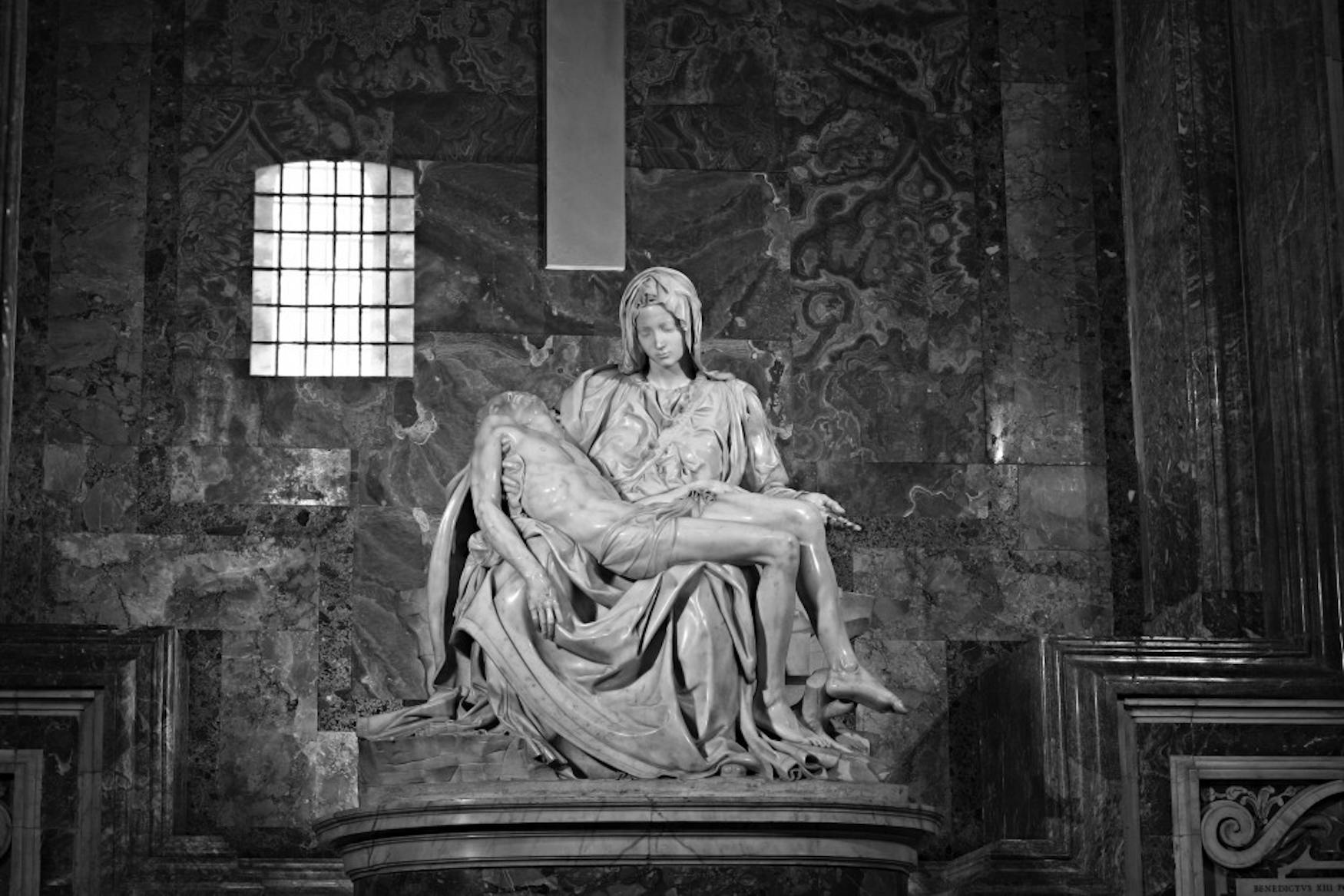Editors' Picks: Works of Art
“Ara Pacis Augustae”
My favorite art installation is the “Ara Pacis Augustae” in Rome, Italy. The “Ara Pacis” was commissioned by the Roman Senate in 9 BC to celebrate peace in the Roman Empire, an era of peace brought on by Emperor Augustus’ military victories in present-day France and Spain. The sacrificial altar was built from Luna marble and features the Imperial family as well as many other notable figures. Friezes, which are richly ornamented paintings or sculptures, make up the walls surrounding the alter. Many people believe that the sculpted friezes on the walls of the alter are reminiscent of the circle of life. They combine images of an abundance of life, (people, plants and animals) with the function of the altar: sacrifice.
The numerous friezes of the altar symbolize the intricacies of Roman art and the iconic time of Roman history. There are many different interpretations of the significance surrounding the altar and it ultimately has been left open to interpretation. I personally like that the meaning of the altar has been left ambiguous. My overall favorite part of the monument is that it was said that on Augustus’ birthday each year, the sun would pass directly through the middle of the “Ara Pacis Augustae.”
—Brianna Majsiak
Water Lilies
The watercolor paintings from Claude Monet’s collection Water Lilies are some of my favorite works of art. Monet, to me, was a master of Impressionism, and his Water Lilies series is his masterpiece. These works of watercolor, although they do not demonstrate an incredibly complex composition or extremely intricate detail, are aesthetically breathtaking.
The installation of these watercolors at the L’Orangerie in Paris is especially evocative. The expansive paintings line the walls of the circular room so that all viewers can see the subtle yet vibrant tones of the pastel-colored lilies on the clear water. Like with most Impressionist works, views from afar and from up close offer two distinctly different experiences. From afar, the water and the lilies swirl together creating a semi-abstract but mostly realistic image of a tranquil pond. From up close, however, strokes of varying thicknesses and sizes are visible so that the painting appears to be much more abstract. The strokes become strokes of color rather than something more representational. But standing back once again, the lilies and the glassy water become apparent once again, and Monet’s incredible genius becomes indisputable.
—Emily Wishingrad
Works of Alex Colville
As the Justice’s lone Canadian editor, I feel a responsibility to highlight the incredible art museum that is the Art Gallery of Ontario.
The AGO never fails to find exhibits that hold broad appeal and feature Canadian artists or themes. In December, the AGO hosted Alex Colville, an exhibition of the Canadian artist’s paintings and drawings. The exhibit was on view from Aug. 23 to Jan. 4.
Alex Colville served several tours during World War II as a war artist, and many of his paintings evoke war imagery. One of his most famous paintings, “Soldier and Girl at Station” from 1953, shows a woman in a white dress embracing a soldier in an empty train station. The painting’s green-based, dark palette contrasts with the woman’s bright dress, emphasizing the different worlds that the two people—a soldier and a civilian—inhabit. Alongside the painting, the exhibit displayed several preliminary sketches and studies of the work in ink and colored pencil. It was interesting to see the work that went into what appeared to be an effortlessly made picture.
—Brooke Granovsky
"Pieta"
While Michelangelo in his later years created many Pietas, the one considered to be his seminal Pieta is the enthralling sculpture he carved out of Carrara marble at the age of 24. Commissioned by a French cardinal for his tomb, the sculpture is Michelangelo’s interpretation of the Biblical scene depicting the Virgin Mary cradling the crucified body of Christ. Michelangelo takes a scene previously depicted in a very gruesome manner and presents it in a graceful, serene and beautified style. Michelangelo revelled in the glory of the human form and strove to exemplify it in the piece. In the work, Christ’s body lies naturally across Mary’s knees, his skin stretching across his rippling muscles and veins, the only blemishes in his hand where he was nailed to the cross and his side where he was stabbed. The youthful depiction of the Virgin Mary impresses upon her untouched purity.
Michelangelo skillfully manipulates cold, unforgiving rock into warm, soft skin and cloth in a manner that evokes a flood of emotion akin to the piece’s title “Pieta,” meaning pity. The sculpture currently resides in a position of honor at the entrance of St. Peter’s Basilica at the Vatican.
—Mihir Khanna



Please note All comments are eligible for publication in The Justice.